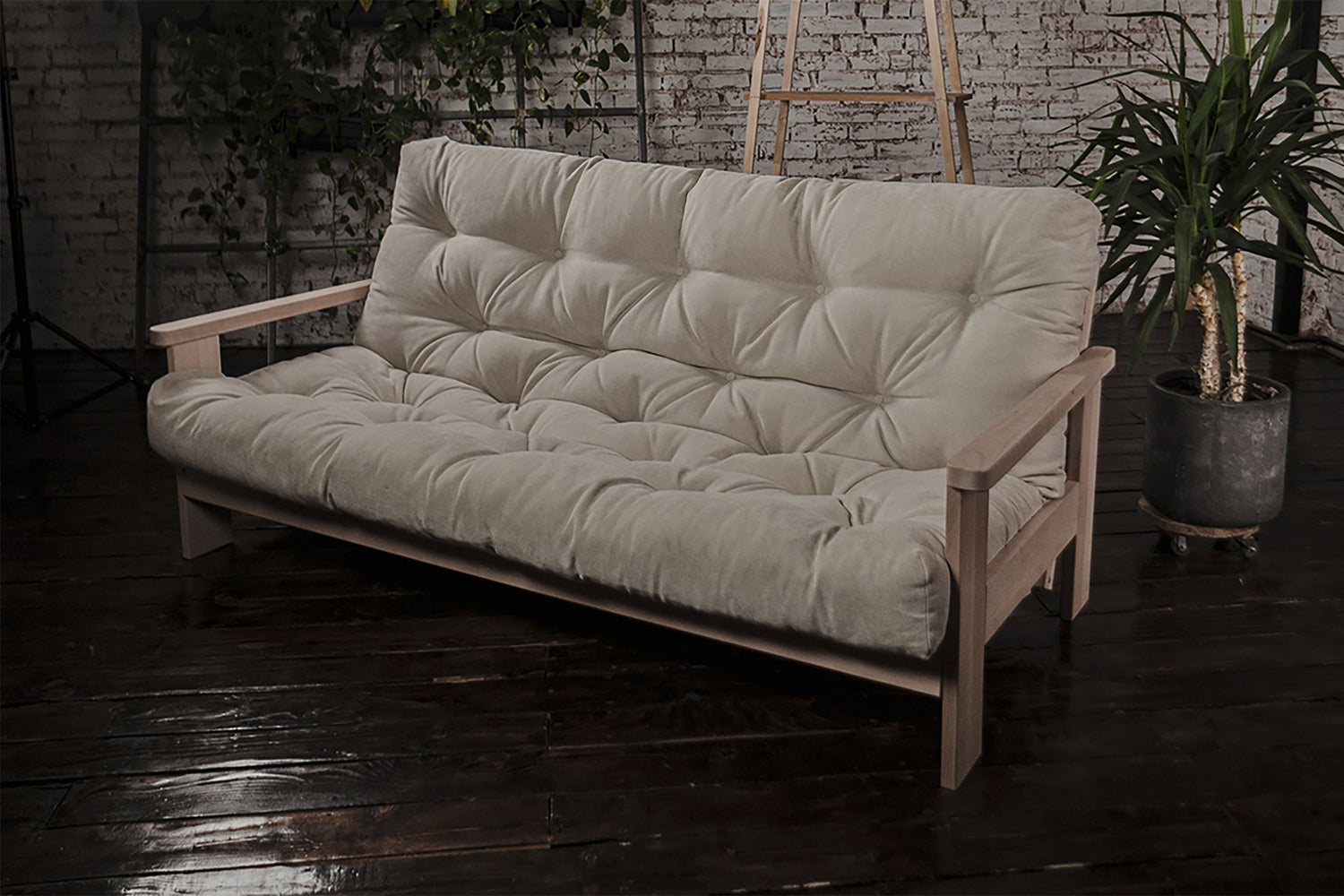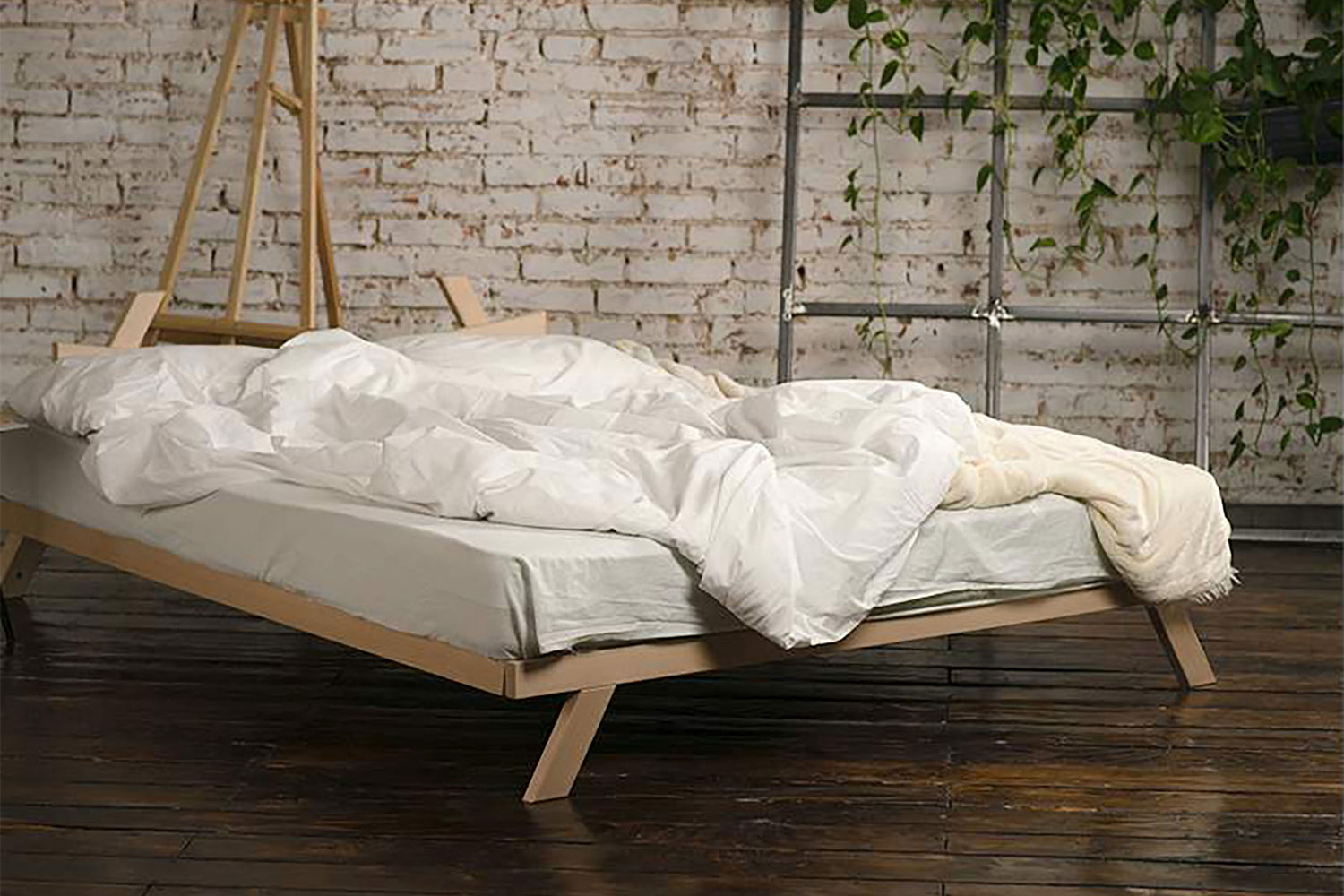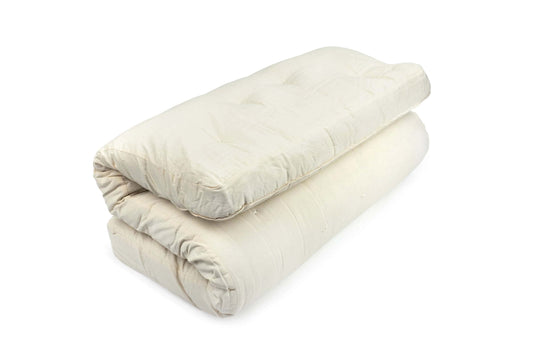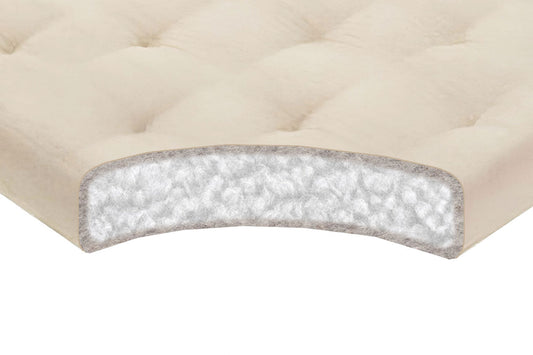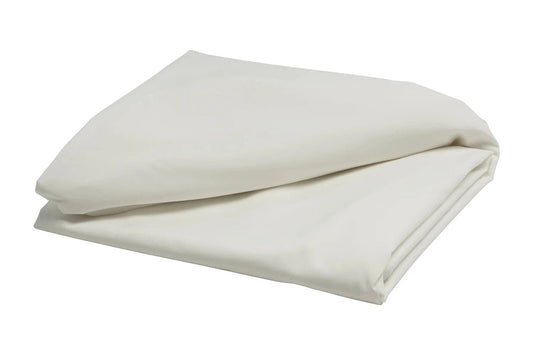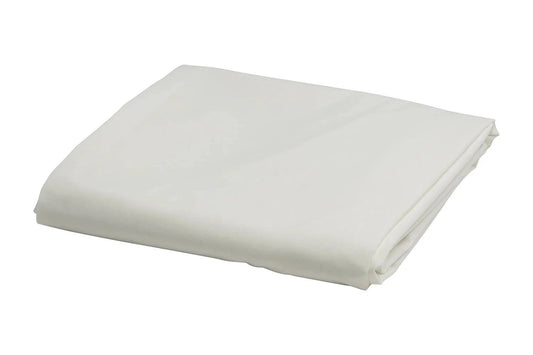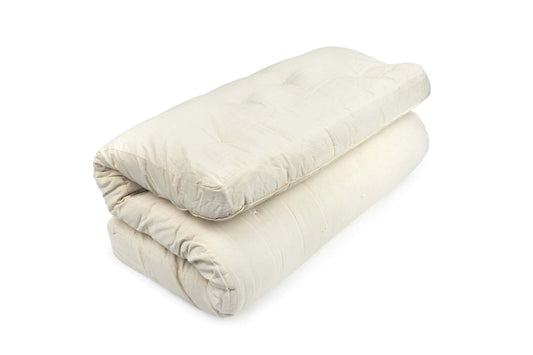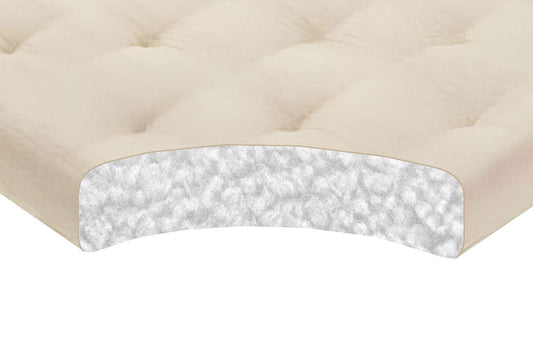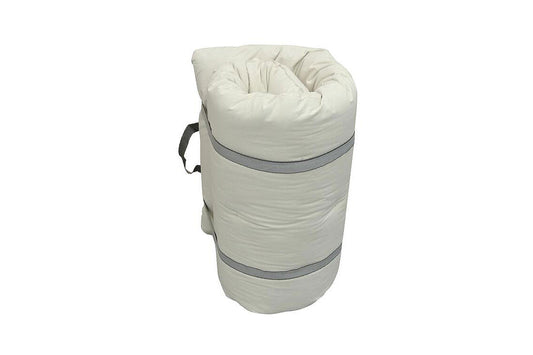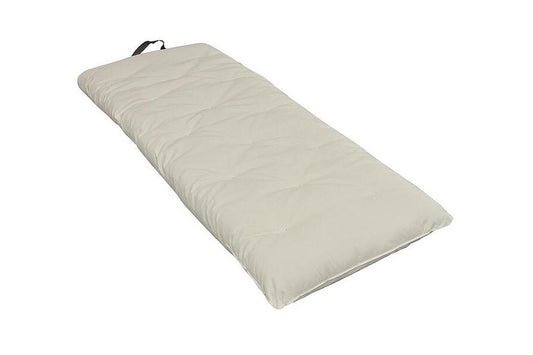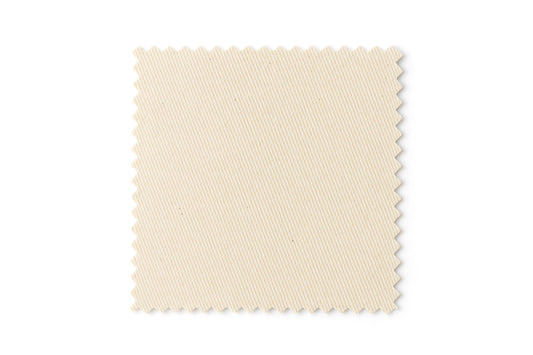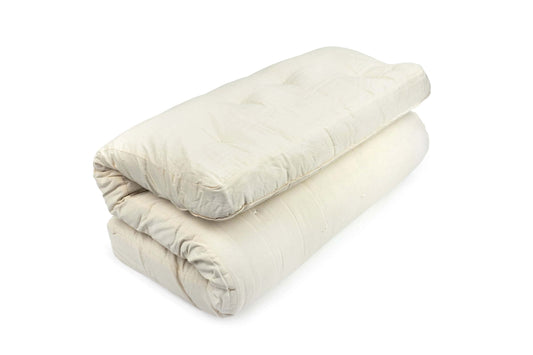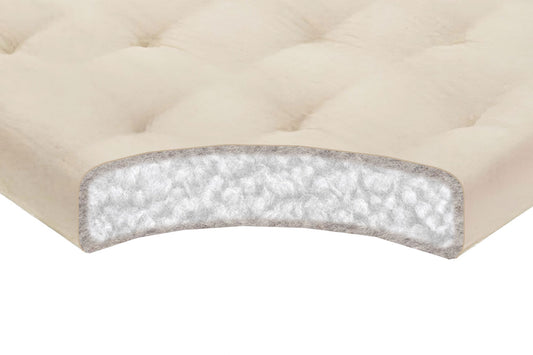
Can Your Mattress Get Moldy? Understanding Mattress Care and Air Circulation
Share
Mold growth is a common concern for mattresses, particularly in environments with poor ventilation or high humidity. Whether you’re dealing with a traditional bed, a Japanese futon, or an air mattress, knowing how to prevent, identify, and address mold is essential for maintaining a healthy sleeping space. In this guide, we’ll explore what causes mold, how to prevent it, and what to do if your mattress has already developed this issue.
What Causes Mold on a Mattress?
Mold thrives in dark, damp environments with limited airflow. Mattresses, especially those placed on floors or used in humid climates, can create the perfect conditions for mold growth. Common causes include:
- Poor Ventilation: Mattresses without adequate airflow underneath are more susceptible to moisture buildup.
- Humidity: High humidity levels can trap moisture in and around your mattress, fostering mold growth.
- Spills and Stains: Liquid spills that aren’t promptly cleaned can seep into the mattress and create mold-friendly conditions.
- Placement on the Floor: Mattresses placed directly on the floor are particularly vulnerable, as the lack of airflow prevents moisture from escaping.
Signs Your Mattress May Have Mold
If you’re worried about mold in your sleeping space, watch out for these signs:
- Visible Spots: Brown, black, blue, or white patches can indicate mold or mildew.
- Unpleasant Odors: A musty or earthy smell is a common indicator of mold growth.
- Health Symptoms: Mold exposure can cause allergic reactions, including sneezing, coughing, skin irritation, and difficulty breathing.

How to Prevent Mold on Your Mattress
Taking proactive steps can help you avoid the headache of dealing with a moldy mattress.
1. Improve Air Circulation
Place your mattress on a slatted bed frame or tatami mat to allow airflow underneath. For Japanese futons, folding and airing them daily can prevent trapped moisture.
2. Use a Mattress Protector
A waterproof, breathable mattress cover can shield your mattress from spills and moisture.
3. Control Humidity Levels
Use a dehumidifier to keep indoor humidity between 30% and 50%. Ventilating your bedroom by opening windows or running fans can also help.
4. Clean Spills Immediately
If liquid spills onto your mattress, blot it dry with a clean towel and allow it to air out completely before covering it again.
5. Rotate or Flip Your Mattress
Rotating or flipping your mattress regularly can prevent moisture from settling in one area.
What to Do If Your Mattress Has Mold
If you discover mold on your mattress, acting quickly is essential to prevent further growth.
Step 1: Inspect and Isolate
Move the mattress to a well-ventilated area, preferably outdoors, to avoid spreading mold spores indoors.
Step 2: Clean the Affected Area
- Vacuum: Use a vacuum cleaner with a HEPA filter to remove loose mold spores.
- Spot Clean with Vinegar: Mix equal parts white vinegar and water, then gently scrub the moldy spots with a cloth or sponge.
- Use Baking Soda: Sprinkle baking soda over the cleaned area to absorb moisture and eliminate odors.
Step 3: Dry Thoroughly
Sunlight exposure can help kill remaining mold spores. Allow the mattress to dry completely before bringing it back indoors.

Can You Use a Mattress on the Floor Without Mold Risk?
While placing a mattress directly on the floor may seem convenient, it increases the risk of mold due to limited air circulation. To reduce this risk:
- Place the mattress on a breathable barrier like a tatami mat or a coir bed rug.
- Lift the mattress periodically to air it out.
- Avoid placing it in humid areas like basements.
Are Japanese Futons More Resistant to Mold?
Japanese futon mattresses, designed for floor use, are naturally mold-resistant when properly maintained. Their lightweight and foldable design makes it easy to air them out daily, a practice that prevents moisture buildup. Pairing a futon with a tatami mat enhances airflow and adds an extra layer of protection against mold.
Can Air Mattresses Develop Mold?
Yes, air mattresses can develop mold, especially if they’re stored damp or used in humid environments. To prevent this:
- Deflate and dry the mattress completely before storing.
- Keep it in a cool, dry place with good ventilation.
- Clean it regularly to remove any potential contaminants.
How to Store a Japanese Folding Bed or Futon
Proper storage is crucial to prevent mold on folding beds and futons. Here’s how:
- Clean Before Storing: Wash futon covers or vacuum the mattress to remove dust and allergens.
- Dry Thoroughly: Ensure the mattress or futon is completely dry before folding it for storage.
- Store in a Breathable Bag: Use a cotton or linen storage bag instead of plastic, which can trap moisture.
- Choose a Dry Location: Avoid storing in humid areas like basements or attics.
FAQs About Mold and Mattresses
Does Bleach Kill Mold on a Mattress?
While bleach can kill surface mold, it may not penetrate deep into the mattress and can damage the materials. Vinegar or baking soda are safer alternatives.
What Causes Black Mold on a Bed Frame?
Black mold on bed frames is often caused by high humidity or poor ventilation. Wipe the frame with a mixture of water and vinegar, then dry it thoroughly to prevent recurrence.
How Can I Prevent Mold on My Couch?
Similar principles apply to couches: ensure proper airflow, clean spills promptly, and use a dehumidifier in humid spaces.
Final Thoughts: Maintaining a Mold-Free Sleep Space
Preventing mold requires diligence, but the rewards—better sleep, improved health, and a longer-lasting mattress—are worth it. Whether you’re using a traditional mattress, a Japanese futon, or an air mattress, maintaining proper air circulation and cleanliness is key.








